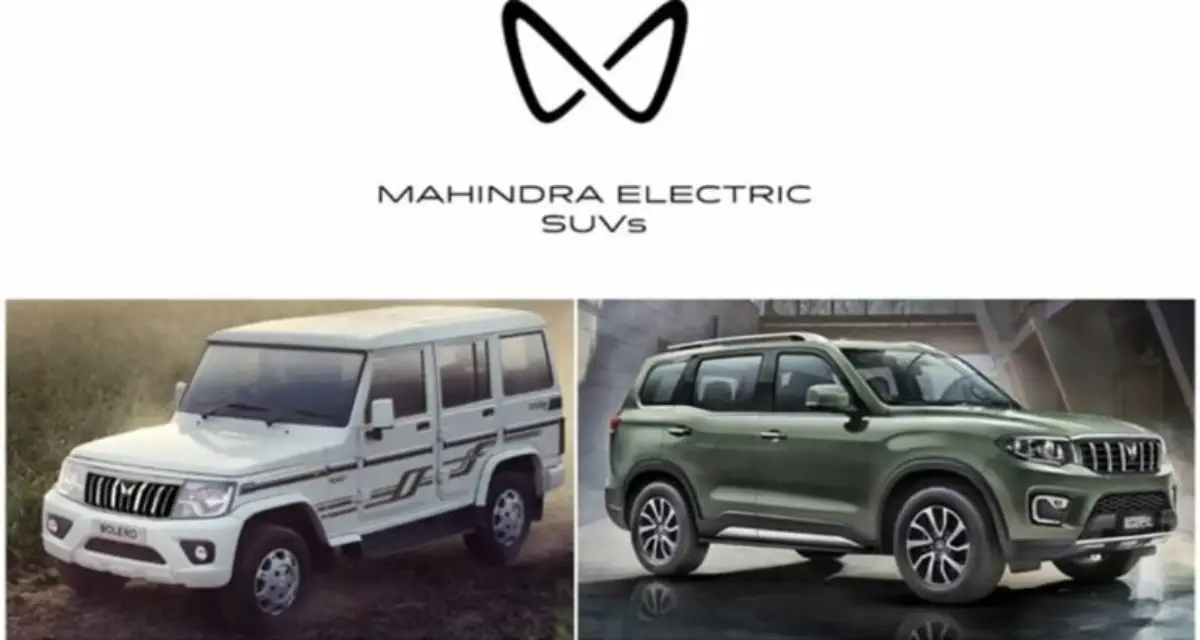
Mahindra Plans Electric Future: Bolero. e and Scorpio. e on the Horizon

Mahindra Plans Electric Future: Bolero. e and Scorpio. e on the Horizon
Mahindra & Mahindra, a pioneer in the Indian automotive industry, is gearing up to electrify its iconic models, the Bolero and Scorpio. This strategic move aligns with the company's commitment to transition all its internal combustion engine (ICE) vehicles to electric variants over time, following the success of models like the XUV.e and Thar.e.
During a recent investor presentation, Mahindra reiterated its plans to introduce electric versions of the Bolero and Scorpio, adding the distinctive '.e' suffix to denote their electric nature. While specific details about these upcoming EVs remain scarce, it is anticipated that they will depart from the traditional ladder-frame chassis typically associated with their ICE counterparts, presenting unique engineering challenges in the process.
Mahindra's foray into electric vehicles gained momentum with the unveiling of the Thar.e concept, which showcased a modified version of the company's versatile INGLO skateboard platform, codenamed P1. This platform, with a wheelbase ranging between 2,775mm and 2,975mm, is likely to underpin the electric Scorpio and Bolero. By comparison, the current-generation Bolero features a wheelbase of 2,680mm, while the Scorpio N measures 2,750mm between the wheels.
Drawing from its existing EV lineup, Mahindra intends for the Bolero.e and Scorpio.e to share battery packs and motors with models like the Thar.e. The Thar.e concept featured dual motors—a 109hp/135Nm front motor and a powerful 286hp/535Nm rear motor, facilitating all-wheel-drive capability. While specific battery details for the new EVs weren't disclosed, expectations point towards options ranging from a 60kWh pack offering approximately 325km of WLTP range to an 80kWh variant extending between 435-450km.
Although timelines for the launch of the Scorpio.e and Bolero.e remain undisclosed, Mahindra has outlined ambitious plans to introduce seven new EVs by 2030, with these iconic models likely among them. This strategic shift underscores Mahindra's commitment to sustainable mobility solutions while meeting evolving consumer preferences and regulatory demands.
In tandem with its electric vehicle initiatives, Mahindra is also preparing to unveil the next-generation Bolero, slated for a debut around 2026-27. This overhaul includes the introduction of the U171 ladder-frame architecture, heralding a new era for Mahindra's SUV and pickup truck lineup. The U171 platform promises to underpin multiple models, with the next-generation Bolero leading the charge.
The introduction of the U171 platform signifies a significant leap forward in Mahindra's design and engineering capabilities, aiming to enhance structural integrity, performance, and versatility across its vehicle portfolio. Anticipated to accommodate at least three SUV variants initially, this platform holds the potential to bolster Mahindra's annual production volumes to approximately 1.5 lakh units. As the platform expands to encompass pickup trucks, this figure could potentially double, positioning Mahindra for sustained growth in the competitive automotive market.
In conclusion, Mahindra's strategic initiatives, encompassing the electrification of iconic models like the Bolero and Scorpio alongside the introduction of the U171 platform, underscore the company's commitment to innovation and sustainability. These advancements not only pave the way for a greener automotive future but also reinforce Mahindra's leadership in driving technological evolution and meeting diverse consumer demands.
Also Read: